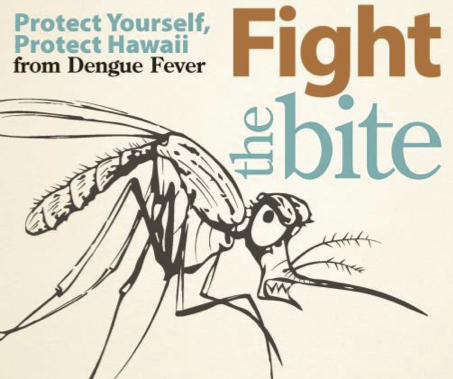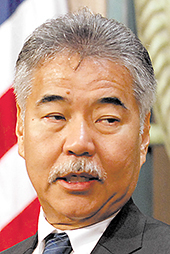HILO — With no new cases of dengue fever reported on the Big Island since late March, state and county officials are concentrating efforts on staving off future outbreaks of vector-borne illnesses.
“Even though we have not had any confirmed or suspected cases, we are not letting our guard down,” Keith Kawaoka, deputy director for environmental health with the state Department of Health, said. “Certainly, we’re continuing with our surveillance and monitoring.”
The last confirmed case of dengue was announced March 23.
Since the outbreak began in September 2015, there have been 263 confirmed cases. Of those, 237 were Hawaii Island residents and 26 were visitors.
According to a DOH spokesperson, an outbreak cannot be declared over until four weeks after the end of the infectious period for the last known case. Dengue fever has an infectious period of one week.
Hawaii County Civil Defense Administrator Darryl Oliveira said that efforts were focused on preventative measures, like spray treatments — the landfills were recently treated — and encouraging the public to be proactive in reducing the number of potential mosquito breeding sites.
“We came across some very unique issues out there (in the field),” Oliveira said.
For example, county workers found more than 10 properties across the island that had hundreds of tires on them.
The tires, which are prime breeding sites because they hold standing water easily, had in most cases not been removed because the property owners were elderly or disabled, Oliveira said. He said the National Guard would be coming in to help clean up the properties in question.
As of early March, the county Department of Environmental Management had already taken in 9,000 old tires for recycling.
To encourage residents to dispose of more waste around their own homes, the department is extending the weekend hours of all transfer stations on the island for the month of April. Transfer stations will be open both Saturday and Sunday from 6 a.m. to 6 p.m.
“We’re still trying to make sure we’re out of the outbreak,” Oliveira said.
Meanwhile, Gov. David Ige on Monday signed a supplemental proclamation extending the emergency period for vector-borne illnesses, which include not only dengue but also Zika virus, by 60 days.
The first period began in mid-February on the heels of Hawaii County’s own declaration of emergency on Feb. 9 and pressure from state Sen. Josh Green and state Rep. Richard Creagan, U.S. Rep Tulsi Gabbard and U.S. Sen Brian Schatz.
At the time, the state released $250,000 to the DOH to fund 10 new positions, including an entomologist and eight additional workers in the Vector Control division; $250,000 also was released before the first proclamation was made.
“That allowed us to reimburse the cost that we had incurred for equipment (and treatment),” Kawaoka said.
In 2009, mosquito control staff was cut by more than half in the wake of the recession. There is a pending budget request moving through the current legislative session that would help restore Vector Control capacity, Kawaoka said.
The extension of the emergency period “allows us to actually continue with our overall statewide response for vector planning,” he said. “We can still request federal assistance, and it allows us to potentially tap into the major disaster fund, the rainy day fund.”
The DOH has been working with the federal Centers for Disease Control and Prevention to develop a statewide response plan that would address all vector-borne illness, specifically Zika virus.
Zika, which is linked to birth defects in infants and paralysis in adults, has been declared a global health emergency by the World Health Organization. It is transmitted by the same mosquito population that hosts dengue fever.
The CDC has not reported any locally acquired cases of Zika in the United States. Hawaii’s five cases have been in travelers coming from countries where the disease is active.
The U.S. House of Representatives unanimously passed legislation on Tuesday that would encourage development of vaccines and treatment for the virus.













